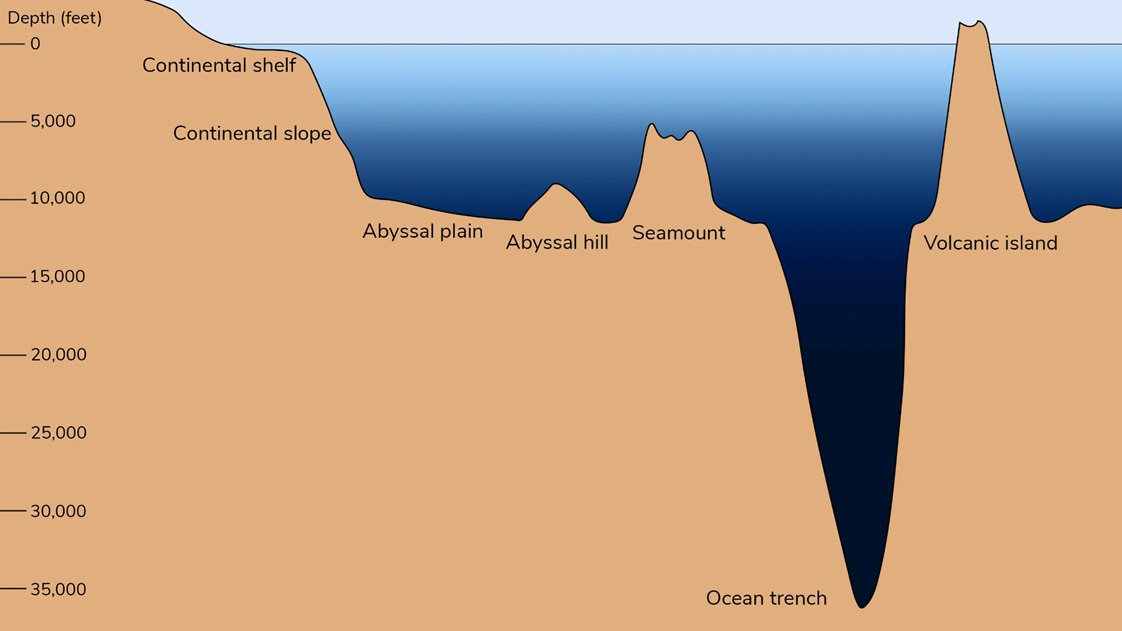- Courses
- GS Full Course 1 Year
- GS Full Course 2 Year
- GS Full Course 3 Year
- GS Full Course Till Selection
- Answer Alpha: Mains 2025 Mentorship
- MEP (Mains Enrichment Programme) Data, Facts
- Essay Target – 150+ Marks
- Online Program
- GS Recorded Course
- Polity
- Geography
- Economy
- Ancient, Medieval and Art & Culture AMAC
- Modern India, Post Independence & World History
- Environment
- Governance
- Science & Technology
- International Relations and Internal Security
- Disaster Management
- Ethics
- NCERT Current Affairs
- Indian Society and Social Issue
- NCERT- Science and Technology
- NCERT - Geography
- NCERT - Ancient History
- NCERT- World History
- NCERT Modern History
- CSAT
- 5 LAYERED ARJUNA Mentorship
- Public Administration Optional
- ABOUT US
- OUR TOPPERS
- TEST SERIES
- FREE STUDY MATERIAL
- VIDEOS
- CONTACT US
Abyssal Plains: Vast and Mysterious Regions of the Ocean Floor
Abyssal Plains: Vast and Mysterious Regions of the Ocean Floor
13-06-2024

Transparent sea cucumbers, pink sea pigs, and bowl-shaped sponges are some of the fascinating animals discovered during a deep-sea expedition to the Abyssal Plains in the Pacific Ocean.
- In the depths of the ocean, where sunlight fades, vast and flat areas known as the Abyssal Plains await exploration. These remarkable places have fascinated scientists and marine enthusiasts alike because of their unique features and the fascinating life forms that live in them.

1. Definition and Location:
- The term "abyssal plain" refers to a remarkably flat region of the ocean floor, typically found at the base of a continental rise.
- Abyssal plains can be found in various oceans around the globe, but the Atlantic Ocean is home to the most extensive ones.
- The North Atlantic Ocean contains the largest abyssal plain on Earth, known as the Sohm Plain, covering an impressive area of 900,000 square kilometers.
2. Depth and Geological Composition:
- Abyssal plains occur at depths greater than 2,000 meters below sea level.
- The underlying oceanic crust beneath abyssal plains is composed primarily of basalt, a dark-colored volcanic rock rich in iron- and magnesium-silicate minerals.
- Layers of sediment, including deep ocean turbidity currents, marine plant and animal shells, wind-blown dust, volcanic ash, chemical precipitates, and even meteorite fragments, cover the basalt.
3. Unique Features:
- Abyssal plains are characterized by their flatness, with depth variations usually ranging from 10 to 100 centimeters per kilometer of horizontal distance.
- Scattered across abyssal plains are abyssal hills and underwater volcanic peaks known as seamounts.
- On one side of an abyssal plain is typically an oceanic trench, where the seafloor dramatically plummets.
4. Abyssal Plain Sedimentation:
- Sedimentation processes play a crucial role in shaping abyssal plains.
- Deep ocean turbidity currents transport sediments from the continental slope and deposit them on the abyssal plains.
- The shells of marine plants and animals that have fallen from the ocean's upper levels also contribute to sediment accumulation.
5. Abyssal Plain Life:
- Abyssal plains are home to a diverse range of marine life adapted to the extreme conditions.
- Transparent sea cucumbers, pink sea pigs, and bowl-shaped sponges are just a few examples of the fascinating creatures discovered during deep-sea expeditions to abyssal plains.
- These organisms have evolved unique adaptations to survive in the darkness, cold, and high-pressure environment of the deep sea.
Conclusion:
The vast and mysterious abyssal plains, covering approximately 40% of Earth's ocean floor, provide a glimpse into the hidden wonders of our planet. Understanding these unique regions is crucial for furthering our knowledge of the deep sea and its profound impact on global ecosystems.



